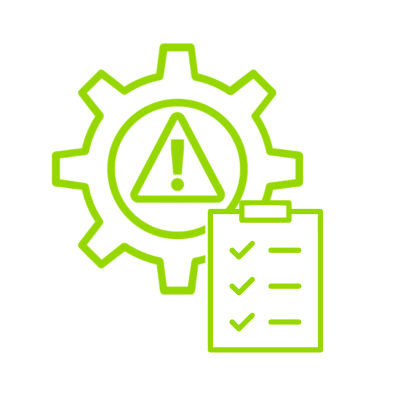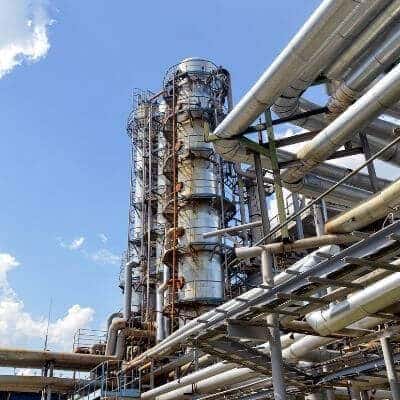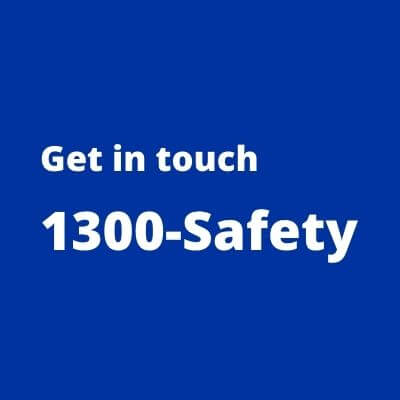WHS Compliance Process
Ensure a safe and healthy workplace for employees. WHS compliance in a business or organisation can assist in meeting legal requirements, improving productivity, reducing staff turnover, and drastically lowering the risk of provisional fines and reputational damage.
HSE Australia offers an immersive audit to help ensure your Workplace Health and Safety (WHS) compliance is in line with requirements. Our thorough and comprehensive review examines your existing procedures, standards, and all WHS-related documentation. Our meticulous process will spotlight potential hazards, risks, management & employee responsibilities, and areas needing improvement.
Contact us to for a consultation on your WHS Compliance Process
Our services include:
HSE Australia’s compliance process includes up to 10 steps. Get all the details here: (LINK)
Our team of certified WHS specialists will conduct a comprehensive audit of your workplace to identify risks and potential hazards.
We will review your existing policies and procedures, identify gaps, and recommend amendments.
Request a Quote
Please provide us with some details.
Read the Article:
10 Step - Work Health and Safety Compliance Process
HSE Australia's team of certified WHS specialist will work with you and conduct a comprehensive audit of your workplace, your policies, they will conduct a risk assessment and gap analysis, and they will provide detailed recomendation.

WHS Compliance Process
In partnership with your team, we carry out a comprehensive 10-step WHS Compliance Process, meticulously evaluating workplace hazards, reviewing existing policies and programs, consulting with your workers regarding concerns and workflows, and developing mitigation strategies.
Our method focusses on your organisations individual WHS compliance, which allows us to highlight any areas that could pose a risk, or potential hazard, or that may require addressing or enhancement.
Our WHS experts are available when it suits you best. We are offering support across a broad range of industries and government organisations, 24/7, throughout Australia.
Your 10-step WHS Compliance Process can include:
- Immersive Audit of existing procedures, standards, and documents in place
- Identification of current hazards in the workplace
- Risk Assessment for each hazard
- Gap analysis (hazards vs. mitigation)
- Development or update of Risk Mitigation approach (Control Measures)
- Update of policies & procedures
- Training & communication of findings, gaps and control measures
- Monitoring & frequent review
- Record keeping
- Reporting
WHS standards and legislation often change. Our expertise covers the following areas:
- WHS Act and Regulations
- Self-Insurer Standards
- AS/NZS 4801 / 4804
- AS/NZS 14007
- Environment and Protection Act & Legislation
Compliance with WHS Act and Regulations
Achieving Workplace Health & Safety (WHS) compliance requires a comprehensive process, starting with an extensive audit and the identification of potential workplace hazards. This step involves diligent inspections, worker consultations, job safety analysis, and potentially, external expert advice, to systematically uncover and evaluate risks that may affect workers, visitors, or the public.
The identified hazards are then prioritised, considering their severity and likelihood, which leads to the creation of a plan for risk control and elimination.
The compliance process usually also includes an individual gap analysis, comparing your organisation’s existing risk management strategies with the desired state or industry-leading standards. This comparison helps to identify opportunities for improvement. And it provides an actionable roadmap to achieve effective risk management, aligning with regulatory requirements and internal policies.
An integral aspect of the WHS Compliance process is also the creation of a comprehensive report. This report, detailing audit results, potential hazards, areas of non-compliance, and recommended actions, serves as an invaluable tool for informed decision-making. Tailored to meet the needs of various stakeholders, this report provides insightful, comprehensible, and useful information.
In essence, achieving WHS compliance not only ensures a safer work environment but also enhances productivity, reduces staff turnover, and mitigates financial and reputational risks, thereby contributing to your business’s overall growth and sustainability.
Workplace Risk Assessment
HSE Australia offers a wide range of Work Health & Safety audit services such as Risk Assessment and Gap Analysis. Contact us for an individual quote.
Solving problems others find difficult...for clients in

Frequently asked Questions
Health Safety Environment Australia
What is a Gap Analysis?
A gap analysis is a strategic tool used to evaluate the difference between the current state of a business or process and a desired future state. It identifies areas of improvement and formulates action plans to bridge these gaps.
What is the difference between risk and hazard?
A hazard is a potential source of harm or adverse health effect, while a risk is the likelihood that exposure to a hazard will lead to harm. To put it simply, chemicals at a workplace are a hazard, only exposure to those chemicals make then a (health) risk.
What is workplace safety?
When safety can be defined as ‘freedom from circumstances that cause, or are likely to cause, illness, injury or damage’ then workplace safety are the actions taken reduce occupational risk and to keep the workforce and workplace free of incidents that can cause harm to workers, volunteers, contractors or sub-contractors, customers, visitors, or suppliers.
What is Work Health and Safety (WHS) or Occupation Health and Safety (OH&S)?
They are the same. The two terms are interchangeable and reflect the words used in some safety regulations in relation to safety and safety compliance in workplaces.
What is a PCBU?
A PCBU is a “Person Conducting a Business or Undertaking” in a commercial or non-commercial area (NFP), on it’s own (sole trader), in partnership or for a Government organisation. PCBU's are required to ensure a safe working environment operates within the workplace(s) for which they have responsibility.
Are safety hazards required to be identified under the WHS regulations?
Yes. A person conduction a business or undertaking (PCBU) must identify reasonably foreseeable hazards in the physical workplace environment; the equipment and materials used that could give rise to risks to health and safety (Regulation 34).
One Source Many Solutions
Over the past 15 years we developed the ability to quickly understand and respond to our clients’ needs. We are “solving problems others find difficult…”.
We offer our clients an enviable team of specialists working with associates and other external experts, driving and delivering fit for purpose, tailored single sourced solutions for you.








